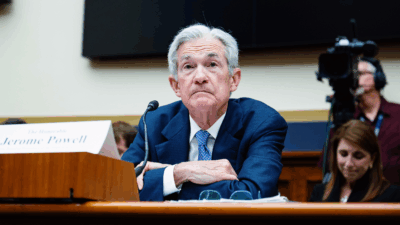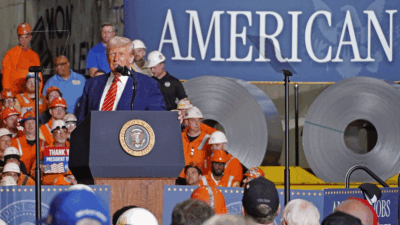China’s Trade Surplus Closing in on $1 Trillion, Bolstering Trump’s Tariff Pledge
Just in time for Trump 2.0, China is on pace for history’s first $1 trillion trade surplus by a single nation, according to Bloomberg.

Sign up for smart news, insights, and analysis on the biggest financial stories of the day.
Just in time for Trump 2.0, China is on pace for history’s first $1 trillion trade surplus by a single nation, according to new calculations by Bloomberg.
Silver Linings Economic Playbook
Bloomberg’s tabulations, using government data released last week, show the chasm between Chinese exports and imports hit a record high of $785 billion in the first 10 months of this year, 16% above the same period in 2023.
Of particular note, China’s surplus with the US rose 4.4% year-over-year, creating a bigger target for tariffs that the incoming administration says could be as high as 60% across the board.
That would be bad news for China, but not as bad as you’d think given how fast it has diversified its overseas trade. The widening trade gap with the world outside of the US is proof of that: up 9.6% with the European Union and 36% with the Association of Southeast Asian Nations bloc that includes Indonesia, Thailand, Vietnam, and Singapore. That means a bigger cushion if Trump follows through on his campaign rhetoric. The US accounted for just 16% or so of China’s overall exports in 2022, and its share has shrunk since then.
Still, Beijing won’t be firing off celebratory baozhu any time soon, as its efforts to spark domestic consumption to soak up more of what it makes continue to fall flat:
- China announced a 10 trillion yuan ($1.4 trillion) lifeline for debt-ridden local governments on Friday, but held off from issuing any new direct stimulus. Markets weren’t impressed, and the Hang Seng Index fell 1.5% Monday, while the iShares China Large-Cap ETF saw outflows for the fourth week in a row.
- But, on the stimulus front, Finance Minister Lan Foan noted last week that “the Chinese government still has a lot of room to raise debt” — the country’s $11.8 trillion government debt, with a 67.5% debt-to-GDP ratio, is well below the 123% G7 average. And, on the equities front, Morgan Stanley economists said Chinese listed companies’ revenue exposure to the US and Canada fell to 3.7% this year from 5.7% in 2017, meaning sanctions might not bite as hard as before.
Downward Revisions: A broader trade war would still, of course, bite. UBS cut its 2025 growth forecast for China to “around 4%” in 2025, down from 4.5%, and said things will trend “considerably lower” after that. Just don’t expect any rash decisions: “History suggests that Beijing tends to react to the actual situation, not preemptively,” Larry Hu, chief China economist at Macquarie, told the South China Morning Post.











